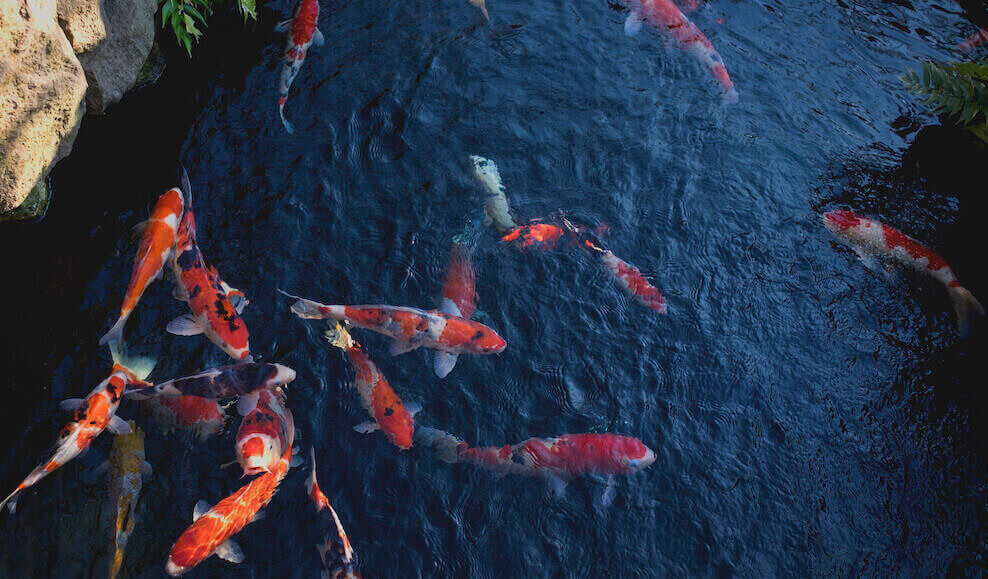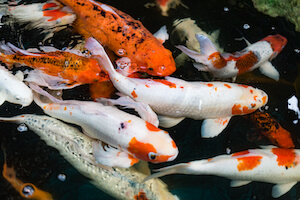
Having an outdoor pond can be quite a thrilling experience, especially when you do it properly. However, you need to incorporate the best skills and choices to make this happen.
Aquariums, which have become more prevalent in recent times, are among the many fish ponds. Outdoor ponds, however, demand a little bit more attention and practice.
Firstly, they can get affected by weather conditions, which may alter depending on your location. So, you need to know what type of fish fits your environment. You wouldn’t want to have a failed outdoor pond project when you start. Another point to note is that each species of fish withstands a particular amount of stress. Some can withstand a lot, and some cannot. These all make up what you are to look out for before starting your outdoor pond.
The choice of fish for an outdoor pond depends on the pond size, the weather conditions, water conditions, etc. Some fish types will be considered shortly, based on some of these characteristics.
Your choice of fish after that should depend on how they adapt to you and your environment.
Yes, the process of checks should start with you. It would be best if you did the necessary checks for the fish’s management sector (feeding and general maintenance).
However, always note that you can always find fish that perfectly fits your environment no matter how extreme, making your outdoor pond experience worth it.
The fish’s economic value is the extra advantage of decimating mosquito larva that can cause malaria.
So here is a detailed overview of the different types of fish to keep in your outdoor pond.
The Best Fish for your Outdoor Pond
1) The Koi Carp

The Koi carp makes the first entry to this list. It descends from the same ancestry as the common carp.
Japanese farmers first noticed their difference from common carp, who observed odd-like color or patches on this type of Carp fish. That led to their separate breeding, which made them known worldwide today.
The koi fish is quite comfortable with a wide variety of temperature, temperate included. So, they are generally known to be a very hardy species of fish. That being the case, though, extreme, prolonged winter conditions do not precisely favor them. Any weather condition that plunges temperatures below 10 degrees always will prove detrimental to the Koi fish. Usually, though, they do well in moderate winters.
Koi carps grow up to 3 feet and have a full weight of 35 pounds when fully grown. Some have also known to live quite long-30 years, for instance.
That, however, depends on their feeding and living conditions. It is advisory for the Koi fish to grow into its full size and live comfortably, there should be a ratio of 500 to 1000 gallons of clean water for every adult fish.
Koi carps are omnivores; they eat almost everything humans eat- meat and plants inclusive.
They, however, love to eat watermelons, cereals, shrimp, and lettuce.
The Koi fish are hardy; they can’t be affected by diseases and predators. They are fish, after all, and need to be cared for and protected. Birds like a heron or similar animals in your area need to guard against them. Try to cover your pond with netting to protect your Koi fish from any of these predators.
The temperature of the pond needs to maintain at 59 to 77°F or 15 to 25°c. That makes the carp immensely adaptable to the outdoor pond and keeps the carp healthy and robust. Try also to maintain the pond pH range at 7.5 to 8 for the best results.
2) Goldfish
Goldfish, like the name implies, can be quite a colorful fish species. They come in various shapes and colors, resulting from long cross-breeding of the different goldfish varieties. Standard features that differentiate one goldfish species from the other include the long fins and unique color pattern of the “fancy goldfish” and the common Comet goldfish’s moderately sized fins. However, the diversity of goldfish species makes them the perfect choice for your outdoor pond- there is a considerable likelihood of finding just the right type amongst your peculiar environment.
Most Goldfish that are adaptable and comfortable for outdoor conditions appear to belong and have standard superficial features. One example is the comet goldfish. Other types, such as Shubunkins and Sarasa, have good swimming abilities but are known to get overbred after a while. Pond goldfish can grow to be very large, given the right conditions.
Some of the largest Goldfish reach 18 inches and average 10 pounds in weight. The smallest sized species can achieve a maximum of 7 inches on average. However, no matter the size, properly kept Goldfish can get live up to 30 years.
Like the Koi, Goldfish are well known to be sturdy creatures; they survive even in freezing temperatures and require the least maintenance amount. Goldfish also do well if living together with other fish species.
It is better to maintain Goldfish in small groups maximum of five, for every 1,000 liters of water. The Goldfish pond needs to be 40 inches deep, at least since they tend to practice hibernation.
Goldfish are often meal targets for herons, cats, or similar animals in your area. Protect your pond by installing netting to deter such predators. Other predators for Goldfish include snakes. If that concerns your locality, take special precautions to protect your fish from any snake attack.
Pond temperature for Goldfish remains at 68- 72°F or 20 to 22°C and should maintain a pH value of 7.2 to 7.6.
3) The Golden Orfe
Orfe fishes are famous around the world. They, however, go by other names, which include ides, golden orfes, and more. The Orfe fish grows to around half a foot in size and one and a half foot in length when bred in ponds. The pond should contain at least 1,000 gallons of water with a meter depth. Orfes tend to grow bigger in bigger ponds and other water bodies, up to three feet in size.
Orfe fishes naturally live in fast-flowing water bodies. That makes them highly demanding of oxygenation in the water at all times. Your pond can also have the same characteristics if equipped with a powerful enough water filtration system; an air pump should also accompany such an approach to level up the aeration in hot weather. Fountains and waterfalls can also incorporate into your setup to maximize water aeration.
Golden orfes are active fish and like to swim around. Appropriate water temperatures for an orfe pond should range from as low as freezing to 90°F or 32°C.
The pond should be alkaline, with an average pH scale of between seven and eight. Live insects, sticks, pond microorganisms, and pellets are some food types for the Orfe.
When properly cared for, the golden Orfe fish can live up to 15 or 20 years.
4) The Pond Sturgeon Fish
The pond sturgeon is a mixture of a wild fish and a domesticated species. Some wild sturgeon species have reached real big sizes as 1100 pounds while living up to 100 years.
Therefore, sturgeons are not your ordinary pond fish. They can grow to immense sizes, even for small varieties. The sterlet sturgeon, for instance, can grow up to one meter. The largest type of sturgeon known- the beluga- can sometimes grow to 10 meters and weigh up to several thousand pounds. If you do not have a large pond or a lake, do not opt for the Sturgeon variety.
The pond in question should be up to 50 inches deep across depth. And should accommodate an average of one sturgeon for every thousand liters of water. The pond should also have a sturdy filter system that can work with the pond’s muddy bottom.
A muddy bottom is most advisable for keeping sturgeon. Therefore, avoid gravel pond for the sturgeon fish. If a pond fulfills these conditions, it can support sturgeon until the ages of 50 to 60.
Try not to place any plants around or in a sturgeon pond, as they can get stuck and die in such conditions.
Sturgeon species differ in their water temperature requirements. The general guide, however, is between above freezing temperatures to below 70°F or 22°C.
As their large size dictates, they eat foods high in protein with about 40% crude protein by weight to gain to their maximum sizes.
5) The Weather Loach
This fish is also known as the pond loach. It is a very much domesticated fish species all around the world. That is because of their easy adaptability to ponds and outdoor water bodies
You might ask, why is this fish called the “weather loach”? Well, this fantastic fish got that name because it predicts terrible weather. Whenever a storm approaches, the weather loach begins to swim frantically, warning onlookers in the process. In other cases, however, they usually behave towards humans and other fish.
Because they are bottom feeders, the Loach is usually at the bottom of a pond or lake. The Loach coexists with other fish species and is also quite a durable fish species.
They are known to live up to 10 years, with wide tolerance for temperatures ranging from 40 to 77° F or 4.5 till 25° c. Loach fish can also keep in indoor ponds during winter. To sum it up, Loach fishes hardly reject food. They grow to an average size of one foot, a manageable size for most ponds.
Final Words
The choice of the right fish for your outdoor pond depends on a lot that happens in your environment. Pond fish, like seen in the wild, need the right, naturalized conditions to thrive. Other important factors include the quality of food, water quality, and fish per given pond.
Provide the right conditions; your fish growing experience will reward you bountifully.
Only do it right.



